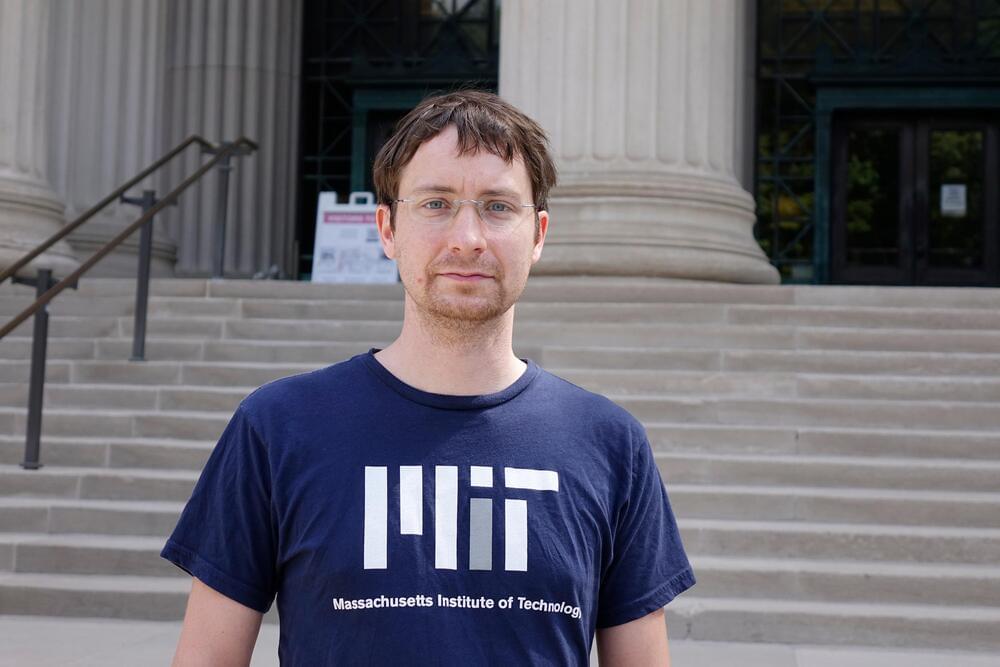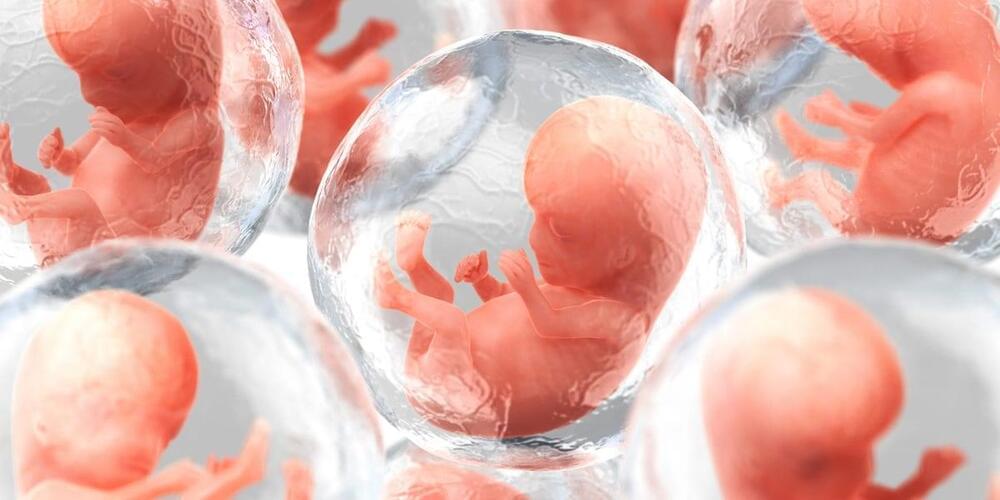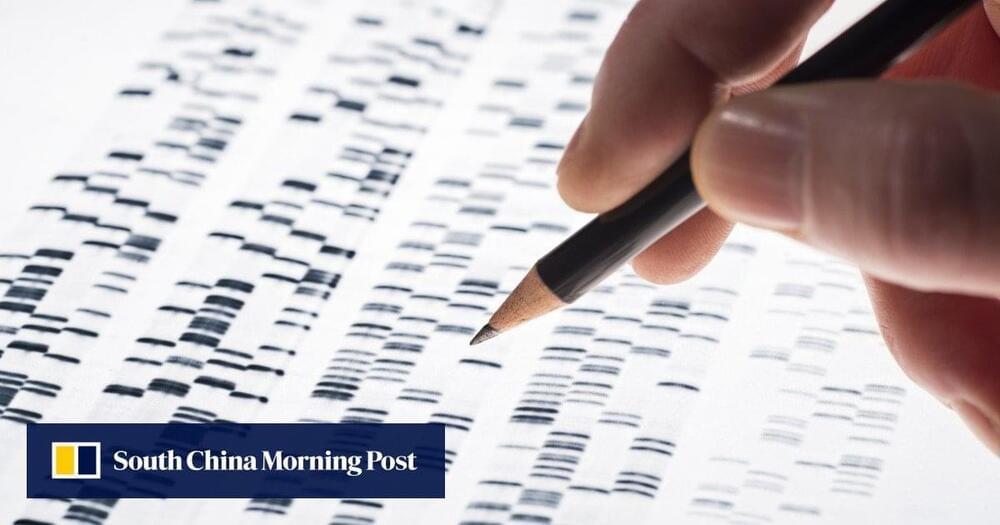Johannes Kalliauer, a postdoc at the MIT Concrete Sustainability Hub, studies how structures like DNA and bridges relate with Newtonian mechanics.



A biotechnology company based in Israel wants to replicate a recent experiment that successfully created an artificial mouse embryo from stem cells — only this time with human cells.
Scientists at Weizmann’s Molecular Genetics Department grew “synthetic mouse embryos” in a jar without the use of sperm, eggs, or a womb, according to a paper published in the journal Cell on August 1. It was the first time the process had been successfully completed, Insider’s Marianne Guenot reported.
The replica embryos could not develop into fully-formed mice and were therefore not “real,” Jacob Hanna, who led the experiment, told the Guardian. However, scientists observed the synthetic embryos having a beating heart, blood circulation, the start of a brain, a neural tube, and an intestinal tract.

I believe that these microbes are not just simple organisms but are some sorta biological singularity seeds that activate over millions of years developing life slowly and may be exterrestial in origin.
Researchers from Hokkaido University in Japan have found new evidence that the chemical components necessary to build DNA may have been carried to Earth by carbonaceous meteorites, some of the earliest matter in the solar system, as they report in a study published Tuesday in Nature Communications. Although these kinds of materials make up about 75 percent of all asteroids, they rarely fall to Earth, limiting how often scientists can study them. Yet they are troves of information: Scrutinizing these space rocks can tell stories about unique cosmic locations. Their contents may also help reveal the ancient chemical reactions that made our world a living planet.
Specifically, several meteorites have been found to contain nucleobases. These chemicals, called the building blocks of life, make up the nucleic acids inside DNA and RNA. Of the five major nucleobases, previous meteorite studies detected only three of them, named adenine, guanine, and uracil. But the present research proves for the first time that two more—cytosine and thymine—can exist within space rocks.
“The detection of all primary DNA and RNA nucleobases in meteorites indicates that these molecules have been supplied to the early Earth before the onset of life,” says Yasuhiro Oba, lead author of the study and an associate professor at Hokkaido University. ” In other words, we got information about the inventory of organic molecules related to DNA and RNA before any life arose on the Earth.” One of the oldest specimens in the study clocks in at about 4.6 billion years old, which is even older than the solar system.
Join us on Patreon!
https://www.patreon.com/MichaelLustgartenPhD
Bristle Discount Link (Oral microbiome quantification):
ConquerAging15
https://www.bmq30trk.com/4FL3LK/GTSC3/
Cronometer Discount Link (Daily diet tracking):
https://shareasale.com/r.cfm?b=1390137&u=3266601&m=61121&urllink=&afftrack=
Support the channel with Buy Me A Coffee!
https://www.buymeacoffee.com/mlhnrca.
Paper referenced in the video:
Supplementing Glycine and N-Acetylcysteine (GlyNAC) in Older Adults Improves Glutathione Deficiency, Oxidative Stress, Mitochondrial Dysfunction, Inflammation, Physical Function, and Aging Hallmarks: A Randomized Clinical Trial.
https://pubmed.ncbi.nlm.nih.gov/35975308/
GlyNAC (Glycine and N-Acetylcysteine) Supplementation in.

Big scientific breakthroughs often require inventions at the smallest scale. Advances in tissue engineering that can replace hearts and lungs will require the fabrication of artificial tissues that allow for the flow of blood through passages that are no thicker than a strand of hair. Similarly, miniature softbotic (soft-robot) devices that physically interact with humans safely and comfortably will demand the manufacture of components with complex networks of small liquid and airflow channels.
Advances in 3D printing are making it possible to produce such tiny structures. But for those applications that require very small, smooth, internal channels in specific complex geometries, challenges remain. 3D printing of these geometries using traditional processes requires the use of support structures that are difficult to remove after printing. Printing these models using layer-based methods at a high resolution takes a long time and compromises geometric accuracy.
Researchers at Carnegie Mellon University have developed a high-speed, reproducible fabrication method that turns the 3D printing process “inside out.” They developed an approach to 3D print ice structures that can be used to create sacrificial templates that later form the conduits and other open features inside fabricated parts.
The world’s first portable brain computer interface (BCI) is being developed by Blackrock and University of Pittsburgh so patients can undergo research trials at home. Rapid Robotics releases fastest and easiest robotic arm setup in requiring no code at all. New AI using light performs 1,000x faster at classifying data.
AI News Timestamps:
0:00 First Portable Brain Computer Interface.
2:29 Rapid Robotics Fastest Robot Arm Setup.
5:03 New AI Using Light Is 1,000x Faster.
👉 Crypto AI News: https://www.youtube.com/c/CryptoAINews/videos.
#ai #robot #news

Reaching the golden years doesn’t always feel so golden. Growing older introduces a range of health challenges, including being at increased risk for developing chronic diseases and having reduced immunity to infection. But while scientists have traditionally viewed the unpleasant aspects of aging as inevitable, new research could reveal how to substantially delay aging and improve the health of older individuals.
Chronic inflammation, one of the major hallmarks of aging, is thought to be partly caused by senescent cells that may accumulate in older individuals. Now, Yale researchers have received a grant [U54-AG079759] from the National Institutes of Health (NIH) Common Fund’s Cellular Senescence Network Program (SenNet) to study these specialized cells. The grant will further scientists’ knowledge of the mechanisms behind aging and potential therapies for dampening inflammation associated with old age. The SenNet is based on ‘Geroscience,’ an approach that intersects basic aging biology, chronic disease, and health to understand the cellular mechanisms that make aging a major risk factor for common chronic conditions of older people. Support by the NIH Common Fund shows the NIH’s commitment to Geroscience as a complex, high priority topic in biomedical research.
“A number of diseases that increase in older people may have a unifying underlying mechanism having to do with senescence,” says Ruth Montgomery, PhD, professor of medicine and of epidemiology (microbial diseases), and co-PI of the project. “If we are able to understand and address this, we may be able to reduce the incidence of a number of diseases, including cancers and heart diseases.”
Discussion panel with:
- Swati Chavda, a science fiction writer and former brain surgeon.
- Ron S. Friedman, a science fiction writer and an Information Technologies Specialist.
August 13th 2022, When Words Collide festival.
#booktube #authortube #writingtube #braincomputerinterface #neuralink.
Relevant links:
Swati Chavda website: https://www.swatichavda.com/
Ron S. Friedman website: https://ronsfriedman.wordpress.com/

Cas13 variants with minimal collateral effect are expected to be more competitive for in vivo RNA editing and future therapeutic applications, researchers claim.
Scientists from the Chinese Academy of Sciences (CAS) have allegedly developed a new “controllable, reversible and safer” gene-editing approach using CRISPR technology.
The system, named Cas13D-N2V8, showed a significant reduction in the number of off-target genes and no detectable collateral damage in cell lines and somatic cells, which indicated its future potential, according to a report published in South China Morning Post newspaper on Wednesday.
Researchers from the Chinese Academy of Sciences say their technology uses an enzyme that targets RNA and has more short-lived effects.

If the combination of Covid-19 and remote work technologies like Zoom have undercut the role of cities in economic life, what might an even more robust technology like the metaverse do? Will it finally be the big upheaval that obliterates the role of cities and density? To paraphrase Airbnb CEO Brian Chesky: The place to be was Silicon Valley. It feels like now the place to be is the internet.
The simple answer is no, and for a basic reason. Wave after wave of technological innovation — the telegraph, the streetcar, the telephone, the car, the airplane, the internet, and more — have brought predictions of the demise of physical location and the death of cities.
Remote work has become commonplace since the beginning of the Covid-19 pandemic. But the focus on daily remote work arrangements may miss a larger opportunity that the pandemic has unearthed: the possibility of a substantially increased labor pool for digital economy work. To measure interest in digital economy jobs, defined as jobs within the business, finance, art, science, information technology, and architecture and engineering sectors, the authors conducted extensive analyses of job searches on the Bing search engine, which accounts for more than a quarter of all desktop searches in the U.S. They found that, not only did searches for digital economy jobs increase since the beginning of the pandemic, but those searches also became less geographically concentrated. The single biggest societal consequence of the dual trends of corporate acceptance of remote work and people’s increased interest in digital economy jobs is the potential geographic spread of opportunity.
Page-utils class= article-utils—vertical hide-for-print data-js-target= page-utils data-id= tag: blogs.harvardbusiness.org, 2007/03/31:999.334003 data-title= Who Gets to Work in the Digital Economy? data-url=/2022/08/who-gets-to-work-in-the-digital-economy data-topic= Business and society data-authors= Scott Counts; Siddharth Suri; Alaysia Brown; Brian Xu; Sharat Raghavan data-content-type= Digital Article data-content-image=/resources/images/article_assets/2022/08/Aug22_04_509299271-383x215.jpg data-summary=
The labor market for jobs you can do on a laptop is expanding beyond major cities.